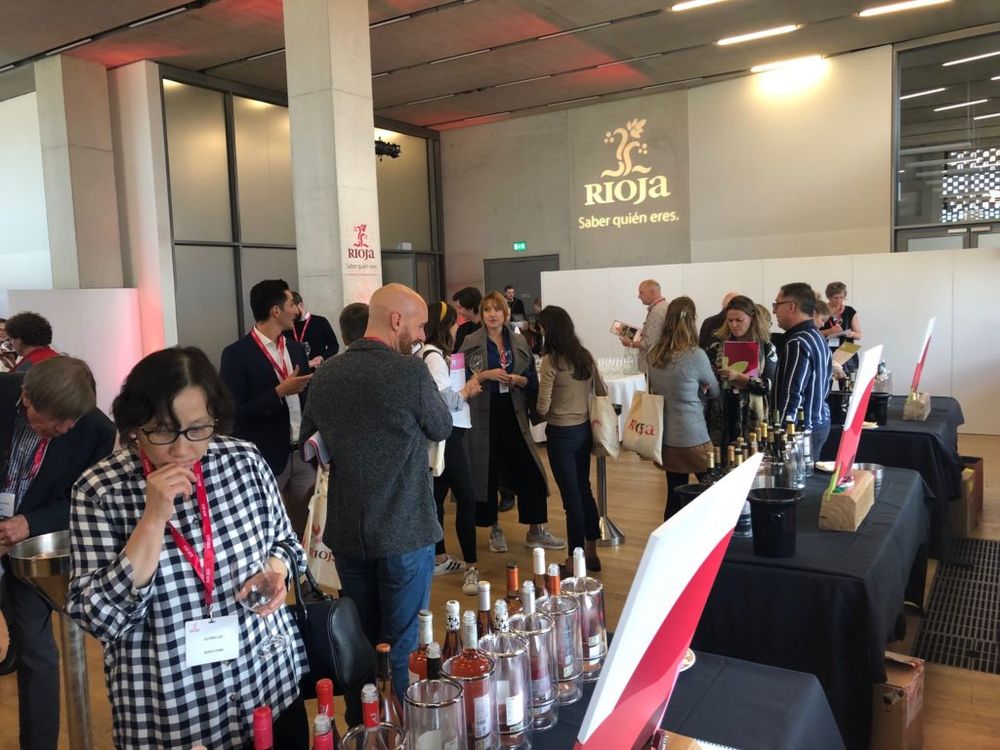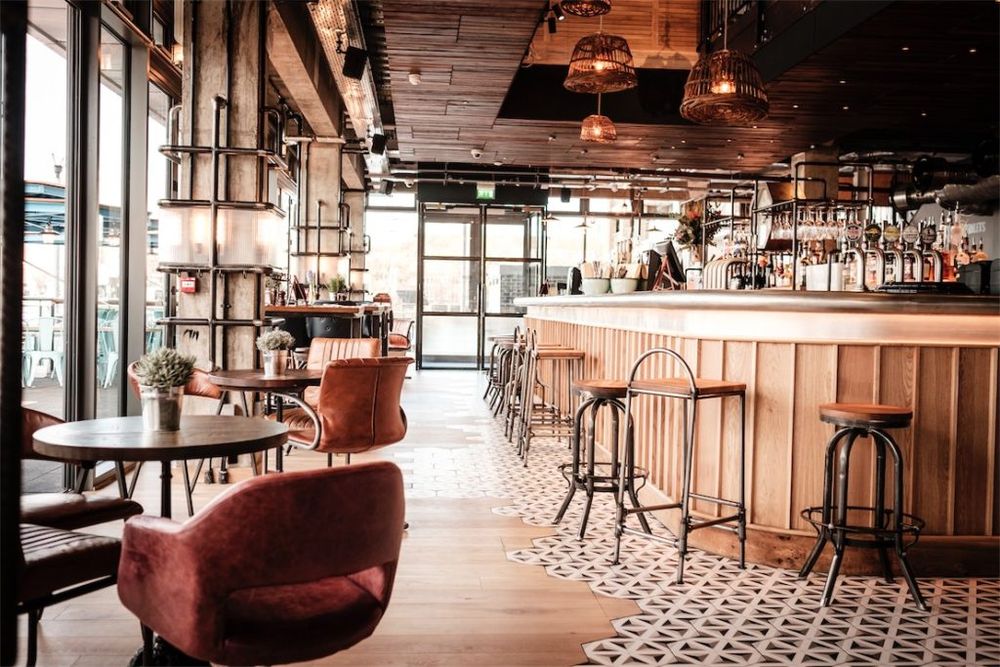It might be one of the most recognisable and understood wine regions in the world, but Rioja still has to keep evolving and developing its wines if it is to maintain its appeal, was the key message from UK buyers.
“It’s the most well known wine region in Spain. It’s a friend to the menu. It flies out the door.”
That’s why Rioja plays such an important part of all the wine lists of restaurateur Richard Bigg, who is also a big friend to Spain in general, as the founder of Camino, the premium Spanish restaurant group in London.
He is as well placed as anyone in the premium on-trade to assess just what it is about Rioja as a wine region that continues to capture the imagination of both the discerning and the occasional wine drinker.

Camino has done more than most to bring Spain, and most of all Rioja, to London diners
For him it is a region that just makes wine customers comfortable about what they are buying. They may not know the styles and all the different ageing levels inside out, but they know they are going to get a wine they like and that works so well with food. It’s why he has six Riojas on his Camino list,pricedbetween £30 to £50 and has no issues selling them.
Wine educator, Laura Clay, who joined Bigg along with other prominent members of the trade across two debates at the recent 10×10 Wines from Rioja tasting, agreed Rioja has just developed a natural affinity with the wine buying public.
“Everyone I do a tasting with will say they they know and like Rioja, even if they don’t know why,” said Clay. “They recognise there are different quality levels.”
New regulations
In fact the way Wines from Rioja has developed its annual 10×10 tasting event, fits nicely with the easily accessible nature of Rioja as a region in general. Rather than the normal confusing mix of tasting tables with no apparent themes or ways to understand the wines on show, the 10×10 tasting is broken down into 10 categories based mostly on style and colour, with only 10 wines chosen by a panel that are supposed to best reflect and showcase what Rioja is doing in those categories. Simple and easy to navigate. Just like Rioja.
Soon, though, the Rioja 10×10 tasting may need to be closer to 10×15 categories to include all the new regulations and sub zones that are being introduced by the Consejo Regulador DOCa Rioja to help give producers the ability to make wines that are from a specific area, a sense of place. Most notably with its new Viñedos Singulares category that designates wines from a selected plot or plots of land and Vinos de Municipio, wines which come from a particular village or town.
The changes have been made in response to producers’ requests to relax the regulations, so that its wines are not just around the focused how long a wine has been aged under its Crianza, Reserva, Gran Reserva system.

The recent Wines from Rioja 10×10 tasting once again demonstrated how versatile and approachable Rioja is
For professional buyers with the time and interest to go and explore all the new regulations in Rioja then it can only be a good thing, said Camino’s Bigg. He said he is fascinated and excited to hear about all the new possibilities of wine that will be coming down the line.
But when it comes to passing all those messages on to consumers he is not so sure. The brilliant thing about Rioja, said Bigg, for his average customer is how easily they currently understand what they are buying. OK they may not exactly know the difference between Crianza and Gran Reserva, but they appreciate the latter will be more expensive and a better quality than the other.
A must have…
That’s what makes Rioja such a must have wine on any wine list, said Neil Bruce, head of wine at Fuller’s, the national pub chain and wholesale business. It’s been a god send for both the mainstream and food-led pub sectors, he added. “Rioja has become the brand that consumers look out for,” he said.
What’s more consumers are prepared to pay more for it. In its more food driven pubs Fullers would expect to sell an entry level Rioja at around £19-20, a good Crianza Rioja for up to £30 and a Reserva for between £30-35.
Christine Parkinson, the former head of wine at the Hakkasan Group, and now running her own consultancy business, said restaurant groups would he looking to sell quality Rioja at £30-£40 and sees no problem at selling older vintages of up to £100.

Fuller’s Neil Bruce said Rioja has become a ‘brand’ amongst wine drinkers and a must have for a list
Nick Room, who until recently was Spanish buyer at Waitrose, said Rioja performs well at between £7 to £10, whereas Spain in general is £5-£6. “Promotions still help Rioja, but it offers incredible value,” he said.
What’ particularly in Rioja’s favour, he added, is how it still performs particularly well in what is the “tough marketplace” of Spanish reds. It is the cut through with the consumer that is so important for Rioja, he added.
“The Rioja brand is very well known and understood. People know where they are when buying it. We are now getting a new wave of modern styles coming through. The whites have got a real opportunity and we are also seeing roses, in Provence style, becoming more popular too. It means there really is something for everyone,” he said. “Rioja can be the ambassador for Spain.”
Point of difference
Lisa Rogerson, winemaker at Sainsbury’s, agreed with Rioja’s affinity with the average consumer which made it such an important category for major supermarkets. The region’s different quality and age bands also fits in so well with the multiples’ different own label levels, said Rogerson.
Taste the Difference, for example, is ideal for Gran Reserva Rioja, compared to Crianza at more entey level branding. “Own label works really well with Rioja,” she confirmed.
Similarly for mainstream and premium restaurants, said Diana Rollan, head of drinks at D&D Restaurants in London. She said the group concentrates more at the Crianza level and finds that works particularly well as “a way to get people into Rioja”.

Rioja makes perfect sense for Fullers new food driven pubs
The fact producers are looking to move away from the “blockbusters” of the past to create more “elegant” wines can only help the category, added Room.
Rogerson said the opportunity was now there for supermarkets to seek out those producers looking to produce more modern styles.
Parkinson said the reason on-trade buyers like herself relied so much on Rioja is that it “fits into so many cateogies on a wine list”. “It has all the styles you want and even has sparkling coming through now,” she added.
It also gives consumers “confidence” in what they are buying which is in short supply on an average restaurant wine list, explained Parkinson. “It’s going to be interesting to see how the new village level wines do,” added Parkinson, who felt they would he particularly well placed to do well by the glass.
New competition

The wines for the 10×10 tasting are selected by a panel of wine judges chaired by Tim Atkin MW and Sarah Jane Evans MW
All of this does not mean Rioja has it all its own way. The major buyers were agreed it is now faced with strong competition from Argentina and Malbec which has so many of the traits that Rioja can boast about.
Bruce said Rioja has many “parallels” with Argentina in how it uses red wines to “pull” people into the category.
At Fuller’s, for example, Spain accounts for around 2.7% of its sales, of which Rioja is over 2%. By value it is 3.5% of what it does in wine. But Argentina is 3.4% of volumes and 4.1% in value. So it can’t rest on its laurels.
“Malbec is a threat to Rioja,” agreed Parkinson.
Bruce urged Rioja producers not to get too distracted by looking to cover too many bases with all the new possibilities, be it single vineyard or rosé and sparkling.
“It should celebrate what it is good at and not bamboozle people with other styles,” said Bruce. “I can see the advantages in the long term, but at the moment it is a niche within a niche. Less is more.”
Fuller’s, for example, promotes Rioja in the same way it does other well known winemaking regions like Chablis and Sancerre. “We will put Rioja on a wine list first. Then the age statement, be it Reserva or Gran Reserva, then the producer, followed by the vintage,” he explained. “Rioja is king for doing it in that way.”
For complete newcomers to wine he will often liken Rioja to “cappuccino in a glass” as it is such a similarly well loved style.

Rioja is a region that consumers just have a natural affinity with
Play to your strengths
Parkinson said Rioja should continue to concentrate on its strengths: “Everything on a wine list has to earn its keep. It’s a much tougher world and there is not a place for all these other styles.”
Rogerson said the major chains will still look to concentrate on the “styles that most people are looking for”.
Room could also see the new sub zones having a bigger and more effective effect in blending wines.
They would also give new reasons to talk about about taste Rioja wines, said Clay. “It can be a bit limited by its own success sometimes.”
Overall, though, the key message from the buyers was “it’s not broke, so don’t try and fix it”. “Don’t throw the baby out of the bath water,” said Parkinson.
Bigg said it was important the region continued to maintain and build on its quality as well as look to expand and introduce new levels.
Bruce’s final messge to Rioja producers was to continue to look outside the region for both challenges and opportunities. In particular the copycat brands that are appearing from other regions of Spain, like Carta Roja, that are trying to cash in on Rioja’s success. “Rioja should get more aggressive about protecting itself. Like Champagne does,” said Bruce.
The fact it has such a strong and revered reputation is a very healthy place to be. It’s how it handles all these new strings to its bow that will dictate how it builds and capitalises on that reputation in the future.
































